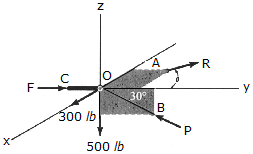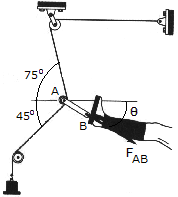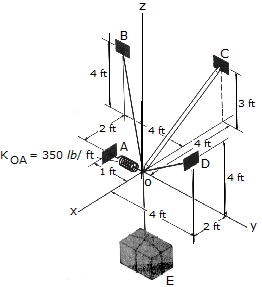Engineering Mechanics - Equilibrium of a Particle
Why should I learn to solve Engineering Mechanics questions and answers section on "Equilibrium of a Particle"?
Learn and practise solving Engineering Mechanics questions and answers section on "Equilibrium of a Particle" to enhance your skills so that you can clear interviews, competitive examinations, and various entrance tests (CAT, GATE, GRE, MAT, bank exams, railway exams, etc.) with full confidence.
Where can I get the Engineering Mechanics questions and answers section on "Equilibrium of a Particle"?
IndiaBIX provides you with numerous Engineering Mechanics questions and answers based on "Equilibrium of a Particle" along with fully solved examples and detailed explanations that will be easy to understand.
Where can I get the Engineering Mechanics section on "Equilibrium of a Particle" MCQ-type interview questions and answers (objective type, multiple choice)?
Here you can find multiple-choice Engineering Mechanics questions and answers based on "Equilibrium of a Particle" for your placement interviews and competitive exams. Objective-type and true-or-false-type questions are given too.
How do I download the Engineering Mechanics questions and answers section on "Equilibrium of a Particle" in PDF format?
You can download the Engineering Mechanics quiz questions and answers section on "Equilibrium of a Particle" as PDF files or eBooks.
How do I solve Engineering Mechanics quiz problems based on "Equilibrium of a Particle"?
You can easily solve Engineering Mechanics quiz problems based on "Equilibrium of a Particle" by practising the given exercises, including shortcuts and tricks.
- Equilibrium of a Particle - General Questions

The joint O of a space frame is subjected to four forces. Strut OA lies in the x-y plane and strut OB lies in the y-z plane. Determine the force acting in each if the three struts required for equilibrium of the joint. Set  = 45°.
= 45°.

A "scale" is constructed with a 4-ft-long cord and the 10-lb block D. The cord is fixed to a pin at A and passes over two small pulleys at B and C. Determine the weight of the suspended block E if the system is in equilibrium when s = 1.5 ft.

Determine the magnitudes ofthe forces P, R, and F required for equillibrium of point O.

Determine the magnitude and direction  of the resultant force FAB exerted along link AB by the tractive apparatus shown. The suspended mass is 10 kg. Neglect the size of the pulley at A.
of the resultant force FAB exerted along link AB by the tractive apparatus shown. The suspended mass is 10 kg. Neglect the size of the pulley at A.

Determine the tension developed in cables OD and OB and the strut OC, required to support the 500-lb crate. The spring OA has an unstretched length of 0.2 ft and a stiffness of kOA = 350lb/ft. The force in the strut acts along the axis of the strut.